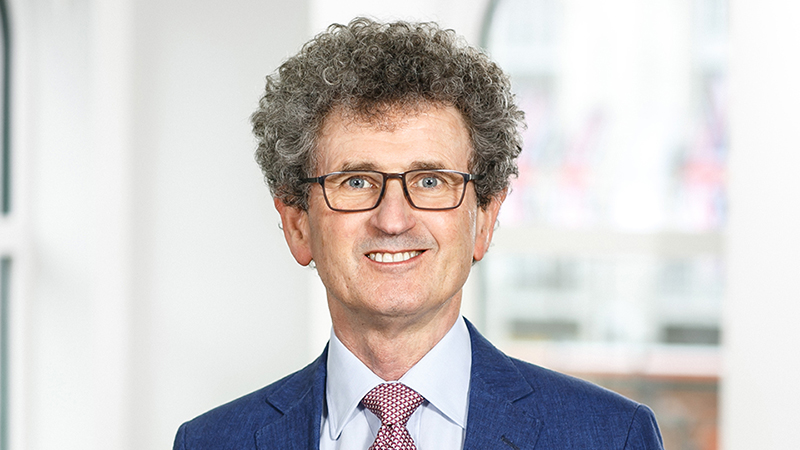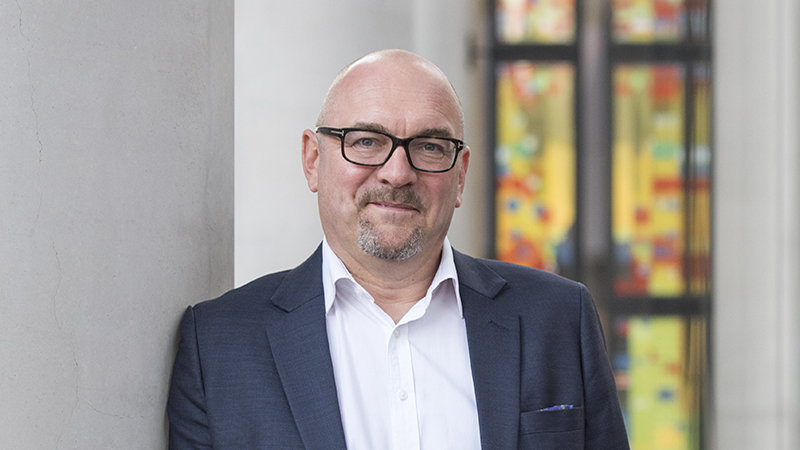
In the latest in our series, Portfolio Adviser hears from Janus Henderson head of UK retail Simon Hillenbrand (pictured right)
Which asset classes and strategies do you anticipate intermediary clients focusing on over the rest of the year and into 2022?
While recent months have seen more volatility across markets and a range of asset classes as economies open up, many clients appear to be sticking to their guns in terms of asset allocation. This year has seen incredible flows into equity funds and this does not appear to be changing as we move through the fourth quarter. As a result, it will be fascinating to see how 2022 shapes up with inflation forming a big part of the current investment landscape.
In my opinion, intermediary clients will continue to allocate to equities for the foreseeable future and, within this asset class, ESG/sustainable funds continue to see strong flows. It will be interesting to see whether COP26 brings about any changes in investor sentiment towards sustainable funds in particular, given the scale of investment required to combat climate change and make the transition away from carbon, both via funds and governments/state entities.
Should end-investors – and, by association, asset managers – be thinking beyond equity and bond investments? Towards what?
The case for diversification across asset classes will continue to grow in the coming months, if inflation builds from here and volatility increases. From recent conversations, however, intermediary clients are already factoring in the need to deploy alternatives, which offer lower volatility than equities.
Given client and regulatory pressure on charges, how is your business delivering value for money to intermediaries and end-clients?
We have been working hard to demonstrate we are adding value to intermediaries and end-clients during the pandemic through a range of our interactions with them and our support for them. The value assessment, now into its third year, is an important means for us to demonstrate how we are working to deliver value to all investors in our funds and it is an important initiative as we look to build greater transparency and trust in our industry.
How much of your distribution is currently oriented towards ESG issues and sustainable investing? How do you see this evolving?
We are fortunate to have a well-established offering in the sustainable and responsible funds arena at Janus Henderson. Our Global Sustainable Equity fund has, for example, just celebrated its 30th anniversary and our heritage here is recognised across the UK funds market, which is great.
Like many of our competitors, we have had to move quickly in response to the rapid growth in interest from our clients in all matters concerning ESG and sustainable investing – which is probably the biggest secular trend I have seen in my career. It is very exciting for us and, when coupled with considerable regulatory change in this area, it is clear we and the wider asset management industry have a prerogative to improve our understanding of the subject and collaborate with clients to give them the outcomes they expect.
We are spending a lot of time and effort in this area as a team and we work closely with our fund managers to relay our clients’ views, needs and opinions – and I do not see this changing any time soon. We all have a part to play here and it is fascinating to see the evolution of this trend. We are all learning every day!
In what ways do you think the experience of lockdown has permanently affected or changed the asset management sector?
It is arguably too early to state that permanent changes have occurred in our sector as a result of the Covid-19 pandemic. The move to more flexible working, however, has really struck a chord with many companies on both sides of the fence in our sector as we all realised we could still achieve good results for clients – technology and broadband allowing! Hybrid working is likely to be a permanent fixture for many as it recognises the need to accommodate the requirements of individuals, and added flexibility should lead to a more diverse and inclusive workforce.
The degree to which technology has moved on – to a point where our interactions with clients have changed as a result – is also really interesting. I still believe, however, that this is a people business and it has been great to get out and see clients again. Most people, I think, want to get back to something approaching normality.
“It can be challenging to put fund managers who are new to the team in front of prospects and win new business in a virtual-only environment.”
How do you plan to balance face-to-face and virtual distribution? Have you identified aspects where one is especially better (or worse) than the other?
We have to be led by our clients here and what we are seeing is that many of them have pivoted from face-to-face interactions only to a mix of face-to-face and virtual. It could be that some interactions – for example, fund manager updates – become increasingly virtual while more relationship and sales interactions occur face-to-face.
One theme I have observed, along with others, is it can be challenging to put fund managers who are new to the team in front of prospects and win new business in a virtual-only environment. For this reason, I think there will still be a healthy degree of face-to-face fund manager/client interaction albeit less than we saw pre-pandemic.
It feels a bit early to call a permanent change here but we are seeing signs that clients are looking for efficiencies in their working day – in the same way technology has continued to deliver through lockdown – and this will be reflected in how we balance face-to-face and virtual interactions with them.
“This is a people business and, ultimately, we all function better when we understand each other’s challenges”
Did you manage a staycation or to get abroad this summer? Whereabouts and how was it?
We went to Cornwall a few times, sadly during the manic, and rather wet, month of August! It was great to get away though and to enjoy time with family and friends.
What aspects of your own lockdown routine do you expect to continue with as people migrate back to office-working?
Not much will change for me personally with regards to office working. I have been going back in the office and loving being back. One thing I am keen to maintain though from the lockdown period is a healthier approach to life with plenty of exercise and family time.
More generally, what are you expecting from ‘the new normal’?
The past 18 or so months were a real challenge on many levels for many people both personally and professionally and one thing I picked up on was how important it was to stay connected with friends and colleagues as we all worked to navigate the pandemic.
I really hope, and expect, the human side will continue to be an important consideration in ‘the new normal’ as it is a people business and, ultimately, we all function better when we understand each other’s challenges and how they affect our welfare and ability to do the day job.










